9 Home Remedies For Poison Oak Itch + When To See A Doctor
Natural and effective solutions to relieve the itching caused by this shrub.
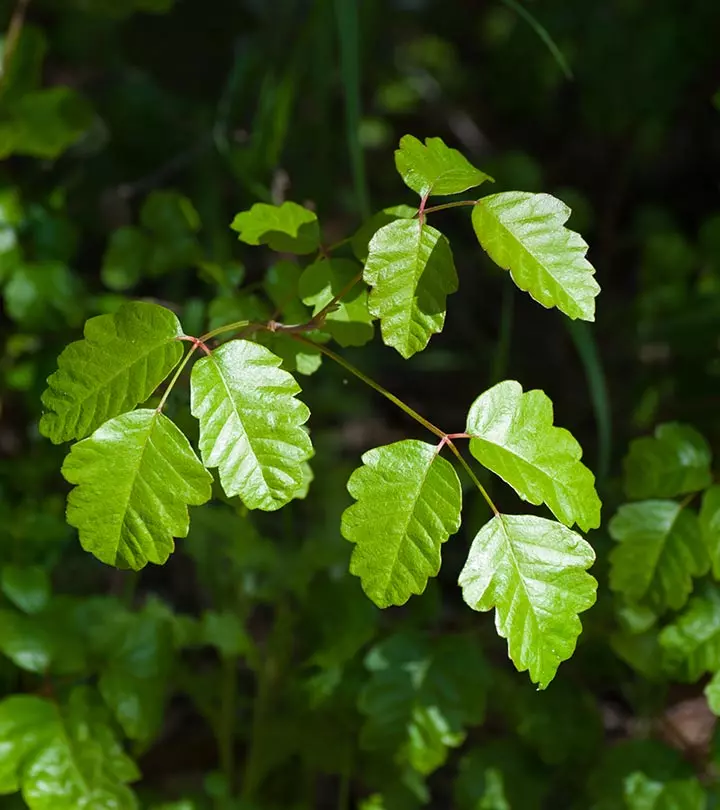
Image: Shutterstock
Have you ever had to abruptly cut short your camping trip because you had an allergic reaction to a leaf that you touched accidentally? Do you find yourself itching and scratching after cuddling with your pet who just walked into your house? Chances are, you or your pet may have touched the poison oak causing you this misery. Poison oak can cause severe allergic reactions, like intense itching and painful rashes, making it a formidable foe for hikers, campers, and gardeners alike. By understanding its appearance, taking preventive measures, and knowing how to treat exposure, you can protect yourself and minimize the discomfort associated with this pesky weed. Read this article to learn all about the home remedies for poison oak.
 Trivia
TriviaIn This Article
What Is Poison Oak?
Toxicodendron diversilobum,
otherwise known as poison oak, is a vine-like shrub that belongs to the sumac family. Commonly found in the western parts of North America and Canada, this plant is notorious for causing extreme itching in humans and animals. You can identify this plant with its dull green leaves that have several tiny hair-like structures all around them. They bear a similar appearance to that of oak tree leaves, hence the name poison oak.
According to the American Academy of Dermatology, 90% of the American population would develop an allergic reaction on exposure to poison oak (1). Similar to poison ivy, poison oak also contains a toxic chemical called urushiol that is responsible for causing these allergic reactions. Urushiol is an oil-like substance that is generally present on the leaves and stems of the plant. When urushiol comes in contact with your skin, it can cause severe itching and rashes. According to the CDC, you can also develop rashes, itching, and lung irritation when you inhale the smoke from burnt poison oak (2).
 Trivia
TriviaYou can experience this allergic reaction even through indirect contact when
- You touch tools that have been used to cut poison oak.
- Come in contact with another person who has been exposed to urushiol.
- Touching clothing or surfaces that have been exposed to urushiol.
In some cases, the allergic reaction to poison oak may not be instant and it can take up to 24-48 hours for the symptoms to appear. What are these symptoms? Let’s find out in the next section.
Key Takeaways
- Also known as Toxicodendron diversilobum, poison oak is a type of vine from the sumac family.
- Redness, severe itching, swelling, bumps, patches, and weeping blisters are the symptoms of poison oak exposure.
- Avoid scratching your skin, take an oatmeal bath, try witch hazel, and apply chamomile and lavender essential oils to prevent poison oak itch.
What Are The Symptoms Of Poison Oak Exposure?
Urushiol oil is the main ingredient of poison oak that causes an allergic reaction. If you can wash it off immediately, you stand a chance to reduce the severity of the symptoms or even possibly prevent them (1). However if the situation does not permit you to wash it off, these are some of the symptoms you will encounter:
- Redness
- Severe itching
- Swelling
- Bumps, patches, and weeping blisters (2)
Some of these symptoms can last for a couple of days and in some cases even up to a week or longer. There is no specific treatment for poison oak allergies, but only remedies to make the symptoms bearable (1).
Susan Kelso, a blogger, shared her personal experience and how she had an incident with poison oak. She recounts in her blog post, “By far the worst area is on my right shin, with various spots scattered up and down the insides of my legs between my socks and underwear (i).” She further shares, “The rash developed over the next several days, with more bumps appearing every day, mostly on my legs.”
Speaking of remedies, here are a few home remedies for poison oak that you may want to try.
Note: There is no one-size-fits-all solution for poison oak itch. If the itch from poison oak becomes unbearable, visit your doctor immediately.
Natural Remedies For Poison Oak Itch
Acting quickly and being mindful is key in preventing the aggravation of allergic reactions. You may try a few of these natural remedies for poison oak allergy.
- Avoid Scratching Your Skin

The first and the most important thing to do is resist the urge to scratch yourself. By scratching yourself all over, you are likely to spread urushiol all over your body and increase the number of affected areas. Also by scratching yourself, you may accidentally burst blisters that could be painful (3).
- Cold Compress
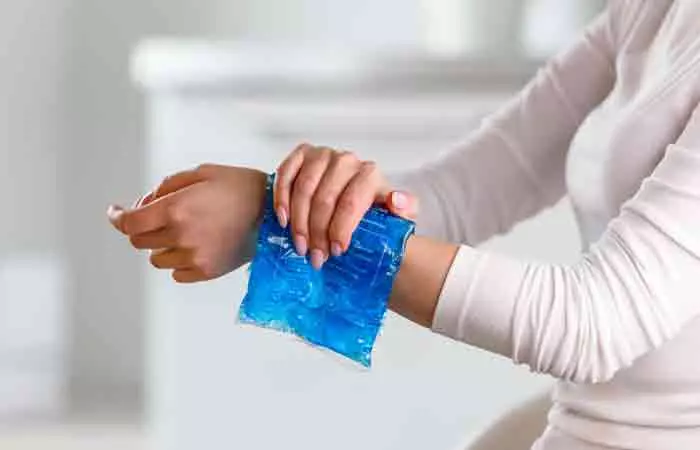
Applying a cold compress on the inflamed area may help soothe it and provide temporary relief (4). You can dampen a towel in ice-cold water and gently place it on the affected area. Repeat this process 3-4 times a day.
- Take An Oatmeal Bath
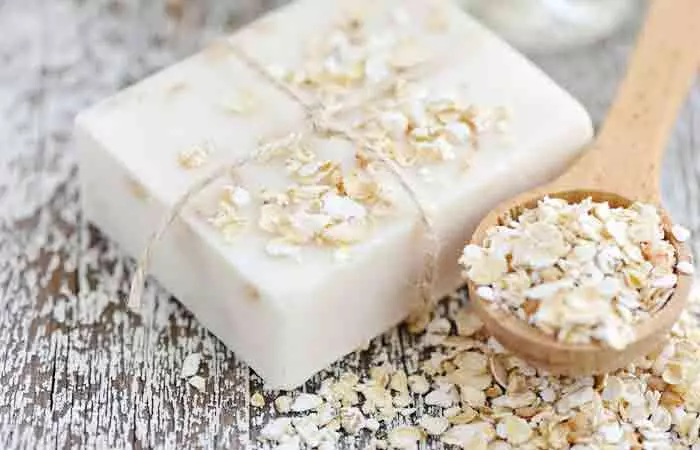
Taking a bath with colloidal oatmeal might help reduce the inflammation and relieve the itchiness (5). Colloidal oatmeal has been traditionally used to treat various inflammatory skin conditions and is quite effective. This skin-soothing property of oatmeal makes this remedy one of the best ways to get rid of poison ivy rash.
- Try Some Witch Hazel
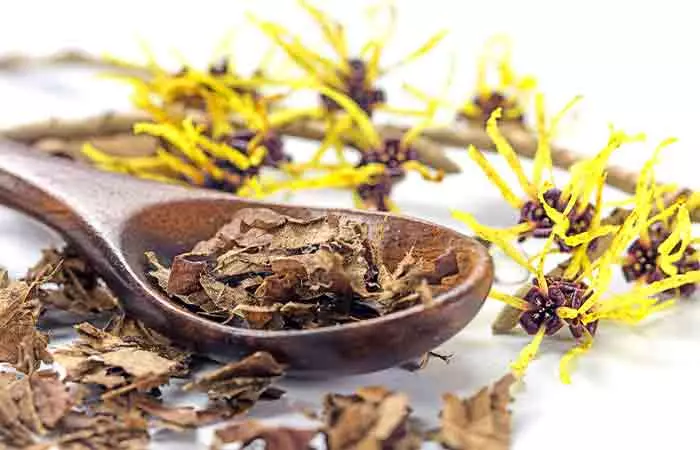
Witch hazel is known to be a natural astringenti The property that helps draw out water from the tissues, causing them to shrink and dry up secretions. and contains anti-inflammatory properties. Topically applying witch hazel extracts on the affected area may help reduce the inflammation and provide momentary relief (6 7).
- Try Applying Some Manuka Honey
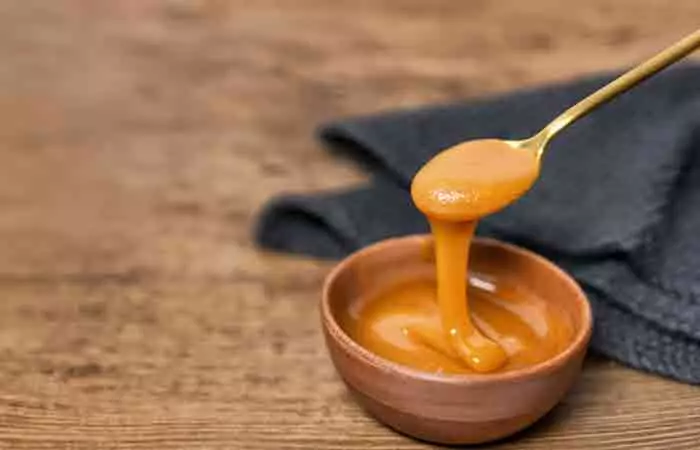
Manuka honey is a popular choice in home remedies for treating various skin conditions due to its antibacterial properties and anti-inflammatory properties. It is also known for alleviating the itchy symptoms of dermatitisi A term that describes a common skin inflammation and irritation caused by allergy, pollutants, genetics, or skin damage. . Applying manuka honey to the affected area may help relieve the itching (8).
- Try Baking Soda
Baking soda may also help provide relief from the effects of poison oak allergy. Research suggests adding a cup of baking soda to lukewarm or cold water and taking a bath to reduce the itching (9).
- Try Using Jewelweed
Jewelweed or the spotted “touch me not” when used as a mash can help relieve the itching caused by poison oak. However, using jewelweed extracts in the form of soaps and gels is not as effective as fresh mash (9).
- Apply Chamomile And Lavender Essential Oils
Lavender and chamomile essential oils have anti-inflammatory and antispasmodici A medication that relieves, prevents, or lowers the incidence of muscle spasms, especially those of smooth muscle. properties. Topical application of these oils may help relieve the burning sensation and itching caused by poison oak (10), (11).
- Use Bentonite Clay
Studies suggest that bentonite clay could act as a barrier and prevent the spread of toxins to other parts of the skin. Using creams and lotions that contain quaternium-18 bentonite could be effective in treating poison oak allergies (12).
Apart from these home remedies, there are a few other remedies that you can try to help reduce the itching caused by poison oak.
Other Remedies For Poison Oak Itch
- Take Prescription Steroids
Steroids like prednisone may help ease the itching (13). However, since this is a prescription medication and a very potent drug, taking it without a doctor’s consultation is not recommended.
- Use Calamine Lotion
You can try and use calamine lotion on your rash. Apart from reducing the itching, it may have a cooling effect and help reduce inflammation (14). You may re-apply this lotion whenever it dries out.
- Take Oral Antihistamines
Oral consumption of OTC antihistaminesi A class of drugs that blocks histamine, a substance the body releases during infection, to relieve allergy symptoms. such as diphenhydramine or cetirizine may help reduce some of the symptoms. However, topical application of these creams is not advised as they may potentially worsen the situation (3).
Having a comprehensive knowledge of different home remedies for allergies can help you deal with sudden allergic reactions in the body. But, specific situations demand targeted solutions. It is believed that these remedies for poison oak are only meant to relieve the symptoms temporarily. There is no other option but to let the symptoms run their course. If you have any medical condition, consult your doctor before trying any of these home remedies because they may interact with certain drugs and potentially cause adverse reactions.
Now, let’s answer some common questions about poison oak rash.
Does Touching Poison Oak Rash Spread It?
No, touching a poison oak rash itself will not make it worse or spread it to other people or other parts of your body. However, you may develop a rash if you touch the affected person’s skin while poison oak oil is still on it. It is important to thoroughly wash the affected skin with soap and water to prevent the rash from spreading.
Now, let’s find out how long it persists on the skin.
How Long Does Poison Oak Rash Last?
According to the American Academy of Dermatology Association (AAD), if a person has previously had a poison oak rash, it may take 1-14 days to go away. A poison oak rash may last up to 21 days in people who have never experienced it (15).
When To See A Doctor
You will need to see a doctor if any of the following conditions are applicable to you.
- If the rash spreads to over 25% of your body.
- Blisters are formed and are filled with yellow pus with scales around them.
- The itching worsens and affects your sleep.
- You find rashes developing near your mouth, eyes, and genital regions.
- You find it difficult to breathe.
- You develop a fever of 100℉ and above.
People who experience conditions like breathing difficulties and high fever must immediately seek medical attention.
Infographic: 6 Natural Ways To Relieve Poison Oak Itch
If you have ever gone hiking or camping and accidentally touched poison oak, you know it is not a pleasant experience. It causes severe itching, redness, and bumps on your skin. Check out the infographic below to learn how you can soothe the itching with simple ingredients available at home.

Illustration: StyleCraze Design Team
In conclusion, poison oak allergies can make you feel very itchy and can cause blisters and skin lesions. A toxin called urushiol that is present in poison oak, causes these allergic reactions. There is no treatment available for this allergy. However, there are a few poison oak remedies such as using colloidal oatmeal, essential oils, and oral antihistamines, that you can use to relieve some of the symptoms. The only thing that can completely cure this allergic reaction is time.
Frequently Asked Questions
How can you tell the difference between poison ivy and poison oak?
The leaves of poison ivy are pointed and grow in clusters of threes, while the leaves of poison oak are less pointy, rounded, and have a hair-like surface.
Why is my poison oak rash spreading?
The poison oak rash may seem to spread, but they do not. They might be new rashes forming on areas that came into contact with the plant oil that causes the rash.
Is Epsom salt bath good for poison oak?
Yes, an Epsom salt bath may help reduce the itch and heal the skin due to its anti-inflammatory properties (16).
Illustration: Home Remedies For Poison Oak Itch + When To See A Doctor
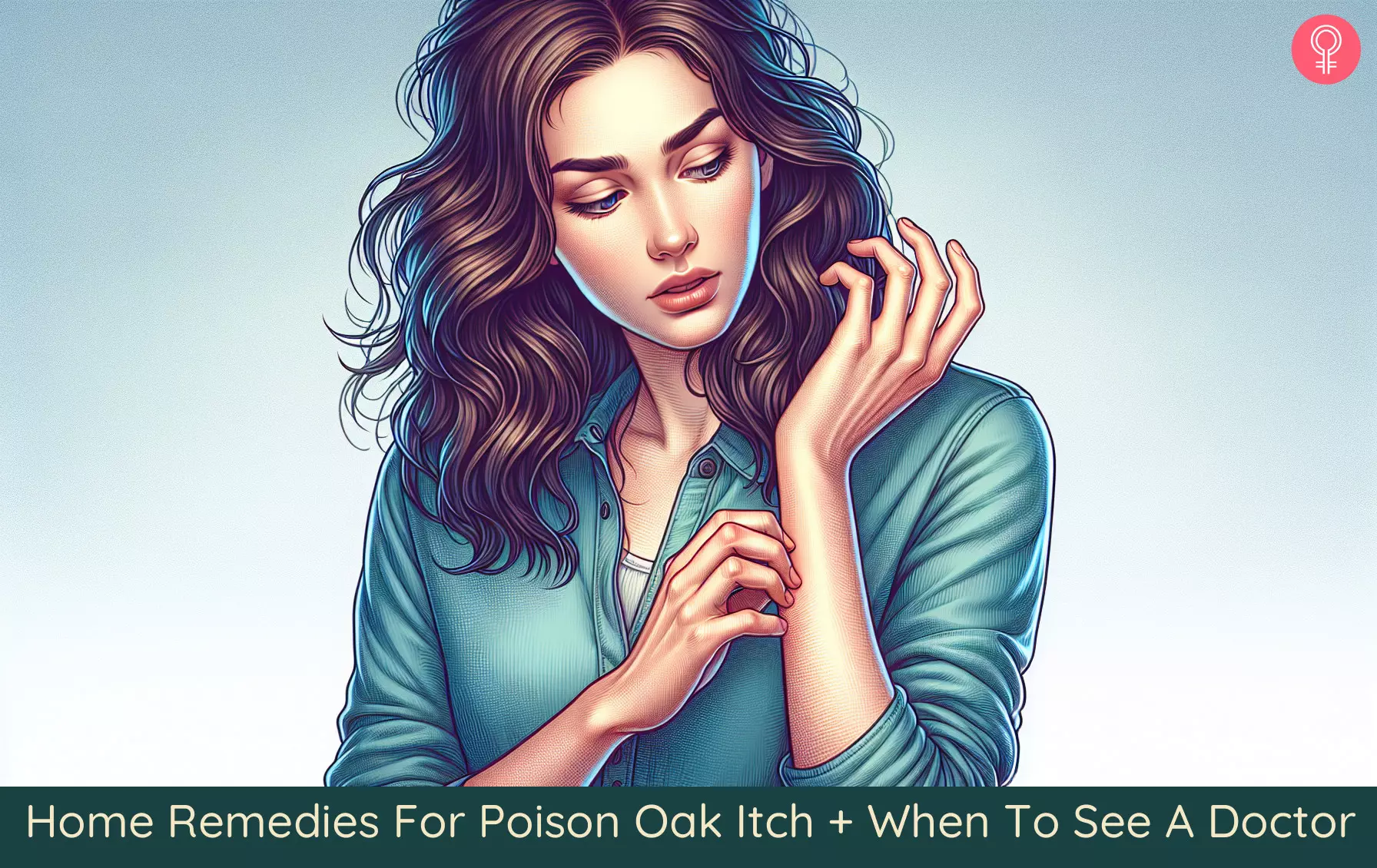
Image: Dall·E/StyleCraze Design Team
Explore Poison Ivy in this educational video. Uncover its symptoms, understand how it affects the skin, and discover effective treatments to alleviate discomfort caused by this notorious plant. Check it out!
Personal Experience: Source
StyleCraze's articles are interwoven with authentic personal narratives that provide depth and resonance to our content. Below are the sources of the personal accounts referenced in this article.
i. Poison Oak Rash Progression: Case Studyhttps://trailhiker.wordpress.com/2012/03/07/poison-oak-rash-progression-case-study/
References
Articles on StyleCraze are backed by verified information from peer-reviewed and academic research papers, reputed organizations, research institutions, and medical associations to ensure accuracy and relevance. Read our editorial policy to learn more.
- The Effects of Acute Antioxidative Ingestion on Contact Dermatitis brought on by Urushiol Exposure (in vivo)
https://www.researchgate.net/publication/282030964_The_Effects_of_Acute_Antioxidative_Ingestion_on_Contact_Dermatitis_brought_on_by_Urushiol_Exposure_in_vivo - Poisonous Plants
https://www.cdc.gov/niosh/docs/2010-118/pdfs/2010-118.pdf - Toxicodendron Contact Dermatitis: A Case Report and Brief Review
https://www.ncbi.nlm.nih.gov/labs/pmc/articles/PMC7733371/ - Role of Cold Therapy and Hot Therapy in Sports Injuries
https://www.researchgate.net/publication/346075542_Role_of_Cold_Therapy_and_Hot_Therapy_in_Sports_Injuries_SPORTS_INJURIES - Anti-Inflammatory Activities of Colloidal Oatmeal (Avena sativa) Contribute to the Effectiveness of Oats in Treatment of Itch Associated With Dry Irritated Skin
https://www.researchgate.net/publication/271332623_Anti-Inflammatory_Activities_of_Colloidal_Oatmeal_Avena_sativa_Contribute_to_the_Effectiveness_of_Oats_in_Treatment_of_Itch_Associated_With_Dry_Irritated_Skin - Antioxidant And Potential Anti-Inflammatory Activity Of Extracts And Formulations Of White Tea Rose And Witch Hazel On Primary Human Dermal Fibroblast Cells
https://www.ncbi.nlm.nih.gov/labs/pmc/articles/PMC3214789/ - Honey: A Therapeutic Agent for Disorders of the Skin
https://www.ncbi.nlm.nih.gov/labs/pmc/articles/PMC5661189/ - Final Report on the Safety Assessment of Sodium Sesquicarbonate Sodium Bicarbonate and Sodium Carbonate
https://journals.sagepub.com/doi/pdf/10.3109/10915818709095491 - The Effectiveness Of Jewelweed
Impatiens Capensis The Related Cultivar I. Balsamina And The Component Lawsone In Preventing Post Poison Ivy Exposure Contact Dermatitis - Effect of lavender essential oil on LPS-stimulated inflammation
https://pubmed.ncbi.nlm.nih.gov/22809036/ - Using Chamomile Solution Or A 1% Topical Hydrocortisone Ointment In The Management Of Peristomal Skin Lesions In Colostomy Patients: Results Of A Controlled Clinical Study
https://pubmed.ncbi.nlm.nih.gov/21617262/ - Bentonite Clay as a Natural Remedy: A Brief Review
https://www.ncbi.nlm.nih.gov/pmc/articles/PMC5632318/ - Calamine Lotion To Reduce Skin Irritation In Children With Cast Immobilisation
https://www.researchgate.net/publication/256470315_Calamine_Lotion_to_Reduce_Skin_Irritation_in_Children_with_Cast_Immobilisation - Effectiveness of calamine lotion as an adjunctive therapy to mometasone furoate ointment in the treatment of infant eczema: A retrospective study
https://www.ncbi.nlm.nih.gov/pmc/articles/PMC9439764/ - POISON IVY, OAK, AND SUMAC: WHAT DOES THE RASH LOOK LIKE?
https://www.aad.org/public/everyday-care/itchy-skin/poison-ivy/what-rash-looks-like - Bathing in a magnesium-rich Dead Sea salt solution improves skin barrier function, enhances skin hydration, and reduces inflammation in atopic dry skin
https://pubmed.ncbi.nlm.nih.gov/15689218/
Read full bio of Dr. Saba
Read full bio of Sanchari Bhattacharya
Read full bio of Eshna Das
Read full bio of Swathi E













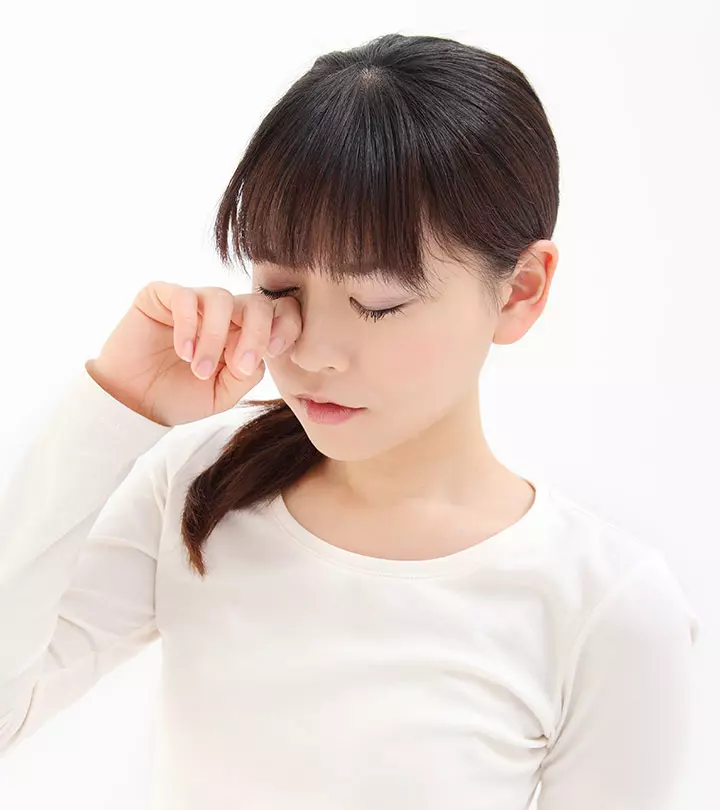







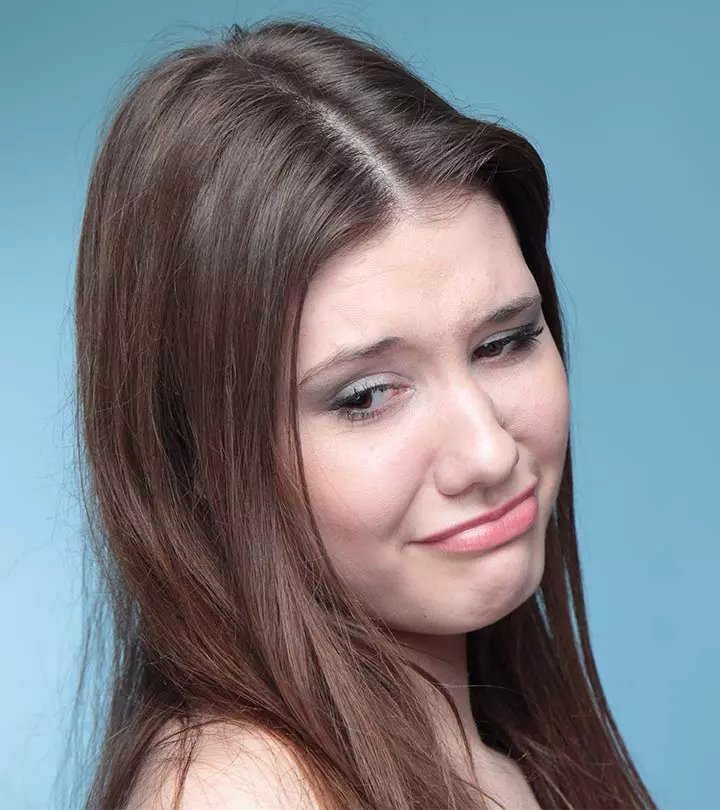
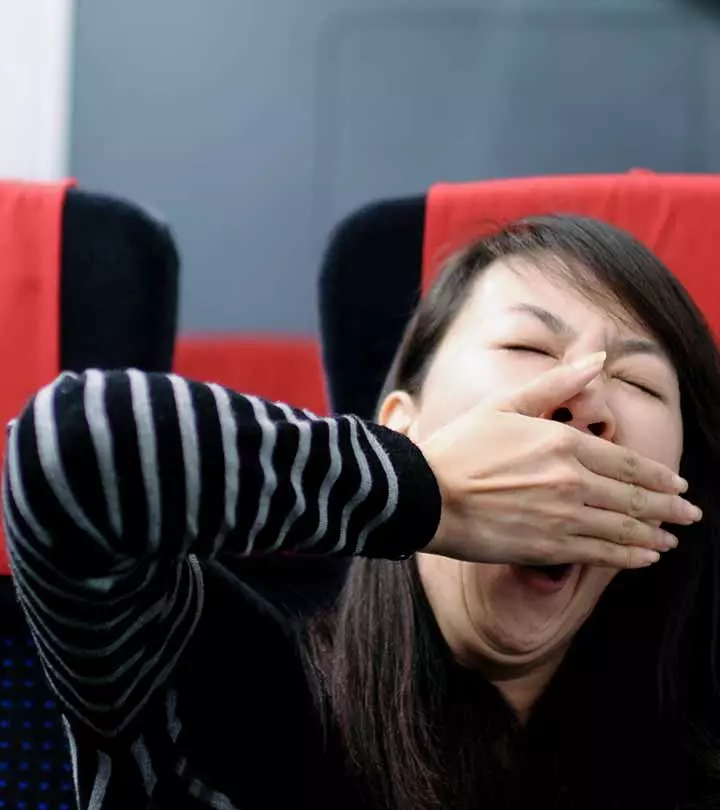
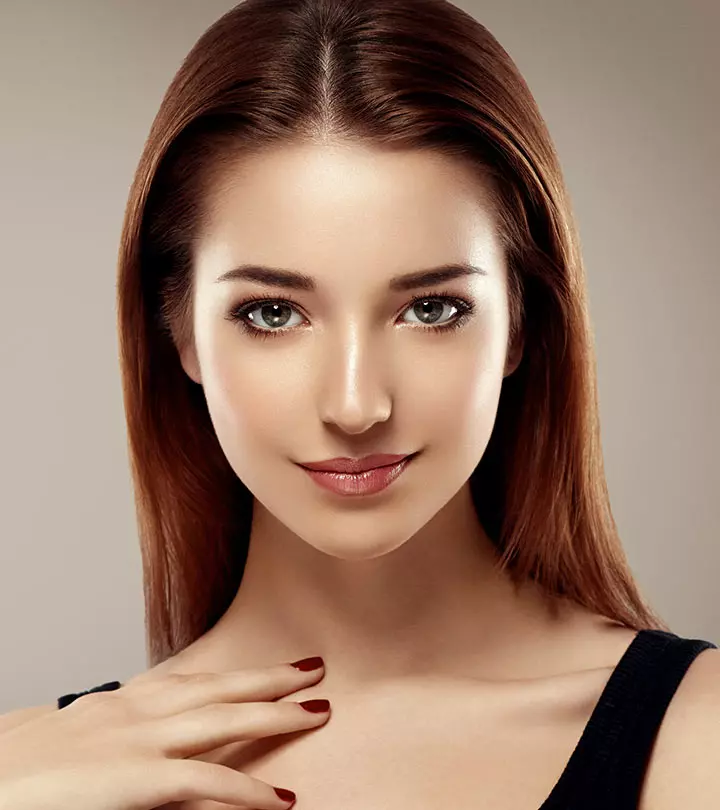

Community Experiences
Join the conversation and become a part of our empowering community! Share your stories, experiences, and insights to connect with other beauty, lifestyle, and health enthusiasts.